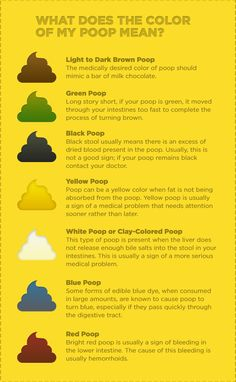Having regular bowel movements is an important aspect of maintaining good digestive health. The color of your stool can provide valuable insights into your overall well-being. While variations in color are normal and can be influenced by diet, hydration, and certain medications, it is essential to be aware of any significant changes in color that may indicate an underlying health issue.
The following is a general guide to help you understand what different colors of bowel movements may indicate:
Bowel Movement Color Chart
What Different Colors Mean
1. Brown: Brown is the most common color of stool and is typically a sign of a healthy digestive system. This color is due to the presence of bile produced by the liver.
2. Green: Green stool can be caused by consuming green-colored foods or drinks, such as leafy greens or food coloring. It can also indicate a faster transit time through the digestive tract.
When to Seek Medical Attention
If you notice any of the following colors in your bowel movements, it is important to consult a healthcare provider:
1. Red or black: These colors may indicate the presence of blood in the stool, which could be a sign of gastrointestinal bleeding.
2. Pale or clay-colored: These colors may suggest a problem with the liver or bile ducts, such as a blockage.
